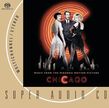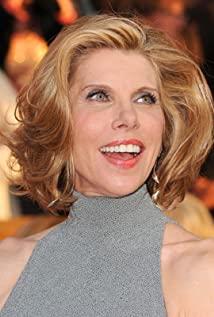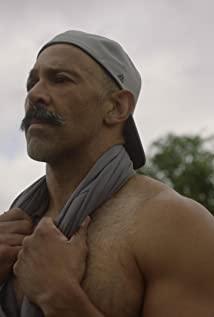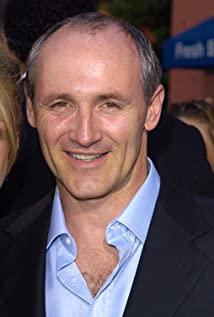As a typical song and dance film, "Chicago" takes a certain plot as the main line, and uses musical narrative methods to highlight the theme through splendid song and dance forms. In song and dance films, the theme of "salvation" is often achieved through paired characters, and through a series of confrontational plots, the mutual rescue between the two parties is finally realized (quoted from "Movie Reading Methods and Examples"). At the beginning of the film, the heroine Roxie tried to betray her body to get a chance to become famous. For a pure dream, she gave up the reality of her innocence. How ridiculous and absurd! The people's mentality has become such a subversion of traditional consciousness under such a flashy and corrupt social atmosphere. Fortunately, at the end of the story, after a series of twists and turns, Roxie and the female number two Velma finally won applause through their own efforts and cooperation, rather than through the use of others, fabricating facts, and relying on public opinion. Notice.
Of course, it is not difficult to see that this kind of entertainment that belongs to Chicago is a deformed entertainment that has been normalized by society. Only through blood, violence, or endless evils can people achieve excitement and satisfy their desire for new things. This is a human tragedy that is absurd and incomprehensible. Like the death of the Hungarian female prisoner in the film, is it telling people that the elegant ballet has died and declined like her? We look at the root cause. Although the economic form of society plays a decisive role, public opinion also needs to bear a great deal of responsibility in it.
The public loves gossip, the media loves topics, and people need to be famous by reports from the radio and newspapers. In addition to this vicious circle, a large number of ordinary people like Roxie and Billy need to rely on the media to make a living on topics. lawyer. Even at the end of the film, the operation of the media has affected judicial justice, and the power of public opinion has changed all aspects of people's lives. In such a dark and ugly Chicago, how can people maintain their innocence?
The film is filled with a lot of words promoting feminism, but it is very dramatic to let a male figure like Billy save the women who kill men. Even though the two of them won the whole house by their own efforts and cooperation at the end of the film, the success of Roxie and Velma is undeniably based on Billy's initial rescue of them. Therefore, throughout the film, the status of men and women is always in a relatively fair state, and the world can only be balanced when men and women are matched. The changes in people's values under the social economic system and under the control of public opinion are really terrifying.
In addition to the thematic level of "Chicago", the photographic technique as a visual element is also quite worth mentioning.
The beginning of the film is a close-up shot of the protagonist's eyes, and then the lens is zoomed in to strengthen it, forming a huge visual impact and firmly grabbing the audience's attention. Immediately, the camera led the audience to a crowded bar, and through fast and high-frequency camera switching, the audience scanned the entire bar environment and the characters in it. And this kind of fast and disorderly cut and collage is continuously used throughout the film, and through a large number of jumps, it brings the audience a break in the visual acceptance, causing the audience’s aesthetic acceptance of discontinuity and jumping, thus speeding up The rhythm and tension of the film.
As far as the state of the camera in the whole film is concerned, sports photography undoubtedly dominates, especially for musicals like "Chicago". Multi-angles, multi-cameras, and multi-function can combine the emotional color of the song and dance and its vision. The pleasure is shown. Among them, the female number two Velma's appearance with the camera not only explained the environment, but also made the audience feel the same tension as the characters in the play, and followed in its footsteps to participate in the development of the story. Another example is the shift lens used to embellish Amos when he appeared on the scene. From the time the reporter took the furniture dealer’s body, the lens moved continuously. After scanning the entire room, the lens moved to Amos, simulating the point where the sheriff suspected his confession. . There is also a typical overhead shot before the start of tango in the cell. Suddenly, only Roxie, a round table and a chair are left in the picture. A sense of oppression and destiny arises immediately. The use of the follower light strengthens the point of view of God. The effect of this indicates what will happen next.
Therefore, compared with fixed photography, mobile photography can increase the rhythm of the film and make the audience feel closer to the real state.
On the other hand, as far as the composition of the film is concerned, "Chicago" is a dynamic composition and an open composition. Because the basic requirements of a musical film are inside, the closed composition will make the picture lack dynamic and lose the rhythm that the film wants to create. Moreover, the world in the frame does not exist in isolation, it always has a relationship with the outside world. For example, when the sheriff interrogated Amos and Roxie for psychological activities, both of them appeared on the stage at the same time, and it was obvious that Roxie occupies more of the screen than Amos. This composition increased the two The feeling of alienation vividly expresses the deterioration of the relationship between the two and at the same time effectively draws the audience's attention to the content of the screen. In addition, when Roxie eavesdropped on the conversation between her mother and Velma in the prison toilet, the director simulated Roxie's field of vision through a narrow gap, blocking the two sides of the screen, forming a sense of cowardice of peeping, and making the audience feel like they are on the scene. , To increase the audience’s sense of identity with the protagonist.
Film composition is different from static visual art such as painting and photography. It is not only a dynamic visual art but also an important factor in expressing the complete meaning of the film. Therefore, the study of film composition should be explored from all aspects.
The color in "Chicago" cannot be ignored when analyzing the film, and its importance is beyond doubt. The entire film gives people a high-contrast visual effect. The first is the contrast between the cold effect in the real world and the warm color effect in mental activities. Second, the contrast between the cold and warm colors of different characters in the stage performance strongly shows a strong contrast. Kind of irony. In terms of psychological feelings, red as a warm color conveys a sense of tension and positivity. For example, almost all stage performances such as Billy’s appearance dance, cell tango, and puppet dance use red stage lights, creating a fast-paced highlight and direction. The trend of external expansion. In the first part of the film, when Roxie and Amos appeared on the stage at the same time, Roxie's slightly orange red and Amos's cold dark blue formed a strong contrast, on the one hand, it showed Amos's stale feeling of loneliness. On the other hand, it also shows that the relationship between the two of them has deteriorated further.
The overall stage colors are more vivid than in reality, and it satirically demonstrates that Chicago is a sensual world, creating an absurd and laughing movie atmosphere and a strong ironic effect.
Finally, the use of light in the film is even more commendable. Light is one of the most important factors in film shooting. The good use of light plays a very important role in enhancing the artistic value of the entire film. The use of direct light such as the follow-up lights on the "Chicago" stage plays an important role in expressing the contours and three-dimensionality of the characters, and also enhances the drama of the film. In the film where Amos's singing and dancing and Roxie sang "funny honey", the use of backlighting makes the silhouette of the characters the best, and the effect of obtaining the silhouette is obvious. Among them, only Amos’s singing and dancing uses pure warm light, unlike other protagonists’ singing and dancing performances, which use red stage lights. This also shows that only Amos is honest in the entire film. Kind, but this character was simply his pain and misfortune in that era. What kind of irony and sadness this is.
At the level of light tones, the stage lights are all high-dimming lights to express their liveliness and excitement and also enhance the illusion of the space. On the same stage, Roxie's final audition was relatively low-key, showing a kind of bleakness and dignity.
In terms of light modeling effects, the film combines natural light effects and dramatic light effects, but the emphasis is still on dramatic light effects, which is inseparable from the theme of the film. In the real world, natural light effects can fully reflect its fidelity and documentary. The extensive use of dramatic light effects highlights the difference between reality and the artificial decoration, creating a strong contrast between the material world and the spiritual world, thereby expressing the main theme of the film.
The film not only has outstanding characteristics in the above aspects, but also involves several viewpoints. Roxie’s subjective point of view at the beginning, to the later predictive point of view, made the audience feel nervous when watching the film, making it easier to devote themselves to the role, enhancing the viewability of the film.
In summary, this film is a commercial film that integrates all the elements of a commercial film. At the same time, it is a literary and artistic film that is realistic, critical and artistic. The film constantly uses song and dance fragments to switch between the real world and the psychological activities of the characters, and uses the repetitive appearance of characters and the consistency of their actions to express the plot, highlighting the overlapping of events and the repetitive themes. In the show interspersed with song and dance, jazz and storyline, the ugly side of Chicago society's money first is brought to the fore.
View more about Chicago reviews











